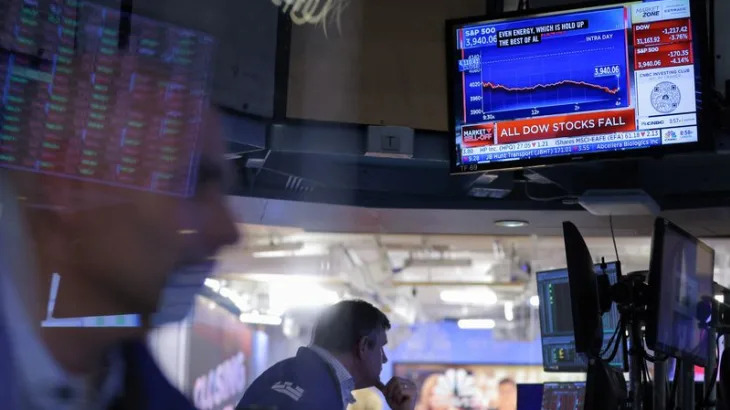(Bloomberg) -- Mexico central bank members see odds of a weaker economy this year due in part to US tariff uncertainty, an outlook that incorporates greater chances of recession but can help tame inflation.
Banco de Mexico’s board members said trade tensions could contribute to another downward revision of their growth estimates, according to the minutes of the March 27 policy decision, when the bank lowered borrowing costs by 50 basis points to 9%. Members led by Governor Victoria Rodriguez signaled that they would continue the easing process in the near term.
“Most members noted that risks associated with trade policy changes in the United States would have both upward and downward repercussions for inflation. They pointed out that, on the one hand, there is a greater possibility of a further exchange rate depreciation and, on the other, a greater risk of a further economic weakening,” according to the minutes published Thursday.
Companies in Mexico and Canada currently must pay a 25% tariff on exports that do not comply with the free trade agreement, known as the USMCA, and on the non-US portion of finished cars. US President Donald Trump’s global tariff rollout on April 2 largely spared Mexico and Canada, unlike dozens of other countries that are facing fees of 10%. China, which is Mexico’s No. 2 trade partner, is facing much steeper levies from the US.
Members of Mexico’s central bank, which is known as Banxico, said long-lasting tariffs would weaken external demand and add to the anticipated weakness in consumption and investment.
One board member suggested that, if tariffs were imposed, Mexican goods that had been destined for export originally could be sold in the local market and would reduce inflationary pressures. Even so, others said the scope and timing of the changes are unknown.
“In the event of more adverse scenarios materializing, although these would have effects on both sides of the balance, the downward bias for inflation would prevail,” said a board member, who added that “the effects of the uncertainty resulting from said policy so far have already been reflected in an additional weakening of the economy.”
Banxico’s Cuts
The board delivered four straight 25 basis-point cuts and then two successive half-point reductions since last year, continuing to bring the key rate down from its peak of 11.25%. Mexico’s economic outlook has worsened, with the central bank lowering its 2025 GDP growth expectations to 0.6%.
Services inflation has been sticky, but both the headline and the core figure have slowed in recent months within the bank’s target of 3% with a tolerance range of plus or minus a percentage point. On Wednesday, data from the country’s statistics institute showed annual inflation edged up slightly to 3.8% and core inflation was 3.64%.
The board’s decision in March was unanimous, suggesting unity among board members about the need for a less restrictive stance. They suggested that cuts ahead could be of “similar magnitudes.”
--With assistance from Rafael Gayol.




